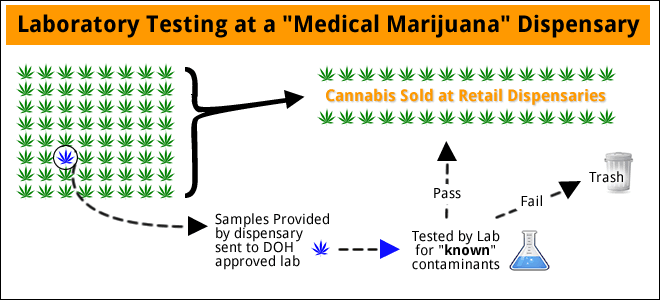
Key questions related to Hawaii’s Controlled Substances Act (329) and Chapter 11-850 of the Hawaii Administrative Rules with respect to required laboratory testing:
- Is Patient, product and public safety achieved through laboratory testing?
- Will the testing laws developed by legislators, law enforcement and the Hawaii Department of Health Approved Testing Laboratories detect everything in Cannabis from licensed dispensaries. Most solvents will be found but the solvent constituencies may not all be detected.
- Do patients ingest more butane from Cannabis or from the lighter?
- Should caregivers and home growers be allowed to test their Cannabis?
- The alcohol extraction methods currently being used by independent growers to create Cannabis concentrates has less residual compounds than a can of beer.
- Should all Cannabis sold in a dispensary get tested or only random samples? What percentage of the products sold should be tested?
How does law enforcement affect public perception of safety? Is the Department of Health making Cannabis safer? How does testing increase patient safety? Will dispensaries produce safer products?
http://www.youtube.com/watch?v=KlibJXUrVy4
Should we could consider whether a [cannabis_tooltip style=”tipsy” position=”north” content=”Solanine poisoning is primarily displayed by gastrointestinal and neurological disorders. Symptoms include nausea, diarrhea, vomiting, stomach cramps, burning of the throat, cardiac dysrhythmia, nightmare, headache and dizziness. In more severe cases, hallucinations, loss of sensation, paralysis, fever, jaundice, dilated pupils, hypothermia and death have been reported.”]tomato (solanine)[/cannabis_tooltip] you grow in your garden is safer than a tomato you purchase from a grocer. We could consider the inputs in the tomato sold at the grocer if those tomatoes were tested and if the grocer did not spray anything on the tomato after testing. We do know that tomatoes are in the Nightshade family. The leaves and stalk of the tomato plant are toxic but so are a half-dozen other plants you may already purchase at the grocer.
The fact remains, that when a patient opens a package from a dispensary, contaminants are introduced from breathing on, touching or setting Cannabis on any surface. Do water fountains at public schools contain more or less contaminants than Cannabis grow in the Sun or from a dispensary?
Also see:

RT @Hawaii_Cannabis: Lab Science and Standards: Myths Facts and Creating a Unified Consensus: . http://t.co/p7pGY…